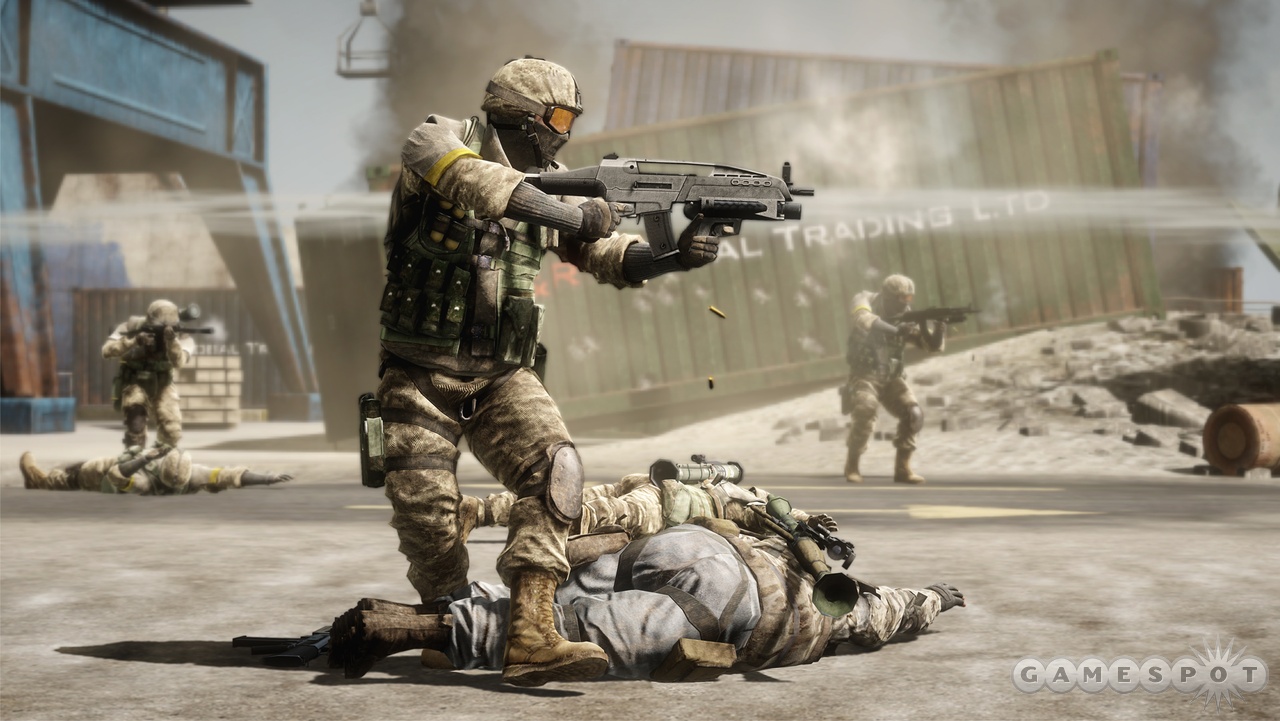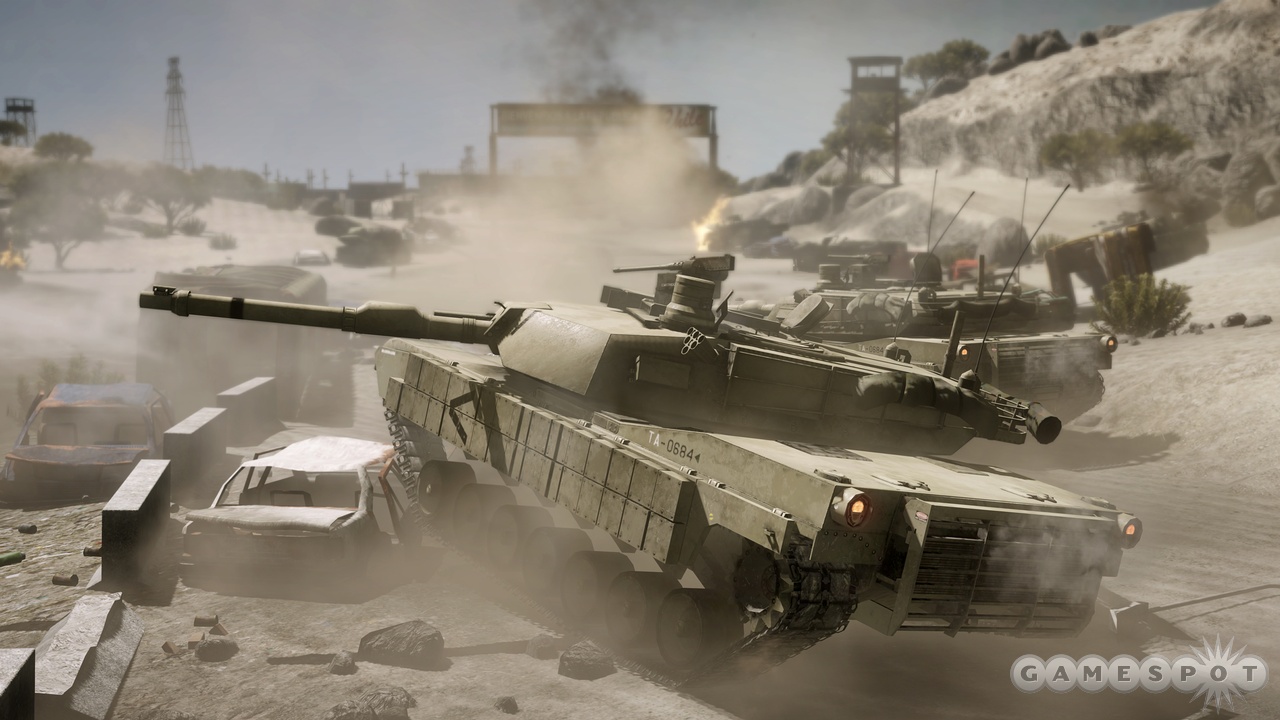Battlefield: Bad Company 2 Public Beta Map Impressions
EA is releasing a Bad Company 2 beta for the PlayStation 3, but before then, we risk life and limb to see what kind of action this South American map will offer.
When EA released the public beta for Battlefield: Bad Company in the spring of last year, it was limited to the Xbox 360 even though the full game would also arrive on Sony's rival console. For the upcoming sequel, EA is taking the opposite approach. The publisher has decided to spread the love around with the announcement of a Bad Company 2 public beta due out exclusively for the PlayStation 3. To get an idea of what's in store, EA recently invited us down to its Redwood Shores offices to play several rounds on the Arica Harbour map that will be included in the beta. (And of course, this map will also be part of the final Xbox 360 and PC versions of the game.)
Fallout 4 Next Gen Update Comparison Stellar Blade - Hard Mode No Damage Gigas Boss Gameplay Stellar Blade - Hard Mode No Damage Abaddon Boss Gameplay Stellar Blade - (Almost) All Outfits Granblue Fantasy: Relink - New Content Trailer Modern Warfare III - New Season 3 Reloaded Modern Warfare Zombies Update Stellar Blade - 13 Things I Wish I Knew S.T.A.L.K.E.R. 2: Heart of Chornobyl — Official "Not a Paradise" Trailer Honkai: Star Rail - "Then Wake to Weep" | Version 2.2 Trailer Devil May Cry: Peak Of Combat | Dante: Blazing Tempest Gameplay Trailer SAND LAND — Official Launch Trailer Sea of Thieves Season 12: Official Content Update Video
Please enter your date of birth to view this video
By clicking 'enter', you agree to GameSpot's
Terms of Use and Privacy Policy
Let's start with a quick primer. If you read our last preview, you'll know that Bad Company 2's multiplayer offers matches for up to 24 players, plenty of ground and air vehicles, and an added focus on customizing your weapons kit. There are four classes to choose from--medic, engineer, recon, and assault--but you can customize your loadout to such an extent that class limitations don't play a huge role. Aside from your primary weapon and the specialized equipment for each class--the medic's defibrillator paddles, the recon's mortar strike device, and the engineer's vehicle-repair tool--there's a lot more flexibility in Bad Company 2. The expanded destruction engine also changes the landscape of battle (literally and figuratively) in the way you'll see more chipping away of cover and entire buildings toppling down.
Arica Harbour is a map that takes place in a fictional South American locale, which focuses on a coastal town set between an ocean and tall mountains. Visually, it's a very bright map situated under a pounding sun that reflects the white desert sand. But don't take that to mean you'll be waging your battles purely in bright, open spaces. Arica Harbour seems to offer lots of potential for various forms of combat, thanks to its mix of dense, urban structures and surrounding hills.
Because we played our matches in the Rush mode, the style of combat changed over time as new parts of the map became unlocked. Rush mode pits an attacking team against a defending team, limiting the former to a fixed number of respawns. The attackers must destroy a pair of crates four times to push their way down the map before achieving victory in the match. If they run out of respawns before taking care of that fourth pair of crates, then it's victory for the defenders.
Each time the attacking team destroys a pair of crates, a new pair opens up a bit farther down the map, which players must make their way toward. The first section on Arica Harbour starts with the attacking team at the end of a long highway with overturned buses and destroyed cars on the sides of the road. The attackers have to push their way down to a small barracks at the end of the highway. There aren't a whole lot of alternate routes to the crates besides going straight down the road, taking cover behind cars and hoping for the best.

The next section opened things up quite a bit, putting the next two crates in the middle of a large town and letting the attacking team go at it from multiple angles. We found the recon class (sniper) the most effective in this area because the tall buildings and surrounding hills offered a lot of hiding spots, while the ability to call in a mortar strike on the area immediately surrounding the crates usually meant a few easy kills against those defenders camping out a little too close to the target. On the flip side, getting in a tank was usually a recipe for disaster. The narrow city streets limit the paths you can take and means any engineer hanging out on the second or third floor of a building can just take his time to fire a rocket-propelled grenade or bazooka at you from up high.
In fact, it seems that jumping into a heavily armored vehicle is no longer the guaranteed kill streak it was in the first Bad Company--at least on this map. One of the ways that developer DICE seems to have balanced things out is by giving on-foot players the ability to use technology to fight the brute strength. One example of this can be seen with the inclusion of a new secondary weapon you can add to your arsenal from the kit customization screen. Rather than carry a pistol, you can elect to carry a tracer dart gun. This slick little device shoots a glowing red tracer onto the side of any vehicle, which acts as a magnet that will pull any explosive projectile within the general vicinity directly to that spot. Thus, your engineers don't need anything close to precision targeting when firing a rocket at a vehicle from afar, helping to destroy those armored pests much more easily.
The third section that opens up in Arica Harbour moves back to a bit of a bottleneck scenario, with the action in the town funneling into a narrow railway bridge that crosses a river. The attacking team can take the direct route and risk charging over the road on the bridge, which turned into a hornet's nest of bullets and grenades in our matches. Or the team can get stealthy and crawl down below, swim across the river, and sneak up behind the defending team. (The latter became our favorite approach in this section, though between the dumpsters under the bridge and the murky water, you could practically smell the filth on us after a while.) After this, the fight goes to the fourth and final section, which takes place in a wide-open shipping yard with a wrecked and flaming boat docked nearby that, sadly, can't be used as a sniper hideout.
While the changing landscape forces you to take different approaches to each chapter in the match, you'll also be earning unlockable rewards as you rack up the kills. These rewards are actually unlocked mid-match. At one point, while playing as the engineer and using an assault rifle, we managed to unlock a shotgun as a reward for reaching a new XP level. The next time we spawned, we swapped guns and jumped into a nasty firefight with the shotgun, which helped us mow down close enemies much more easily than before. In other words, it looks like those unlocks can affect the battle as quickly as the changing terrain.

Overall, it feels like Arica Harbour is a map that focuses on a lot of on-foot, close-quarters combat. In fact, there are no helicopters on the map at all, unless you count the recon drones players can pilot remotely to scope out enemy positions. This stands in stark contrast to the other map we've played on--such the snowy Alaskan map Port Valdez--which had a ton of vehicles to choose from and lots of long stretches of snowy dirt roads. It looks like DICE really wants to mix up the types of experiences offered on each map, which strikes us as a good thing. We should have a better idea of what to expect from some of these other maps, and the story campaign, as we get closer to Bad Company 2's March 2 release.
Got a news tip or want to contact us directly? Email news@gamespot.com
Join the conversation